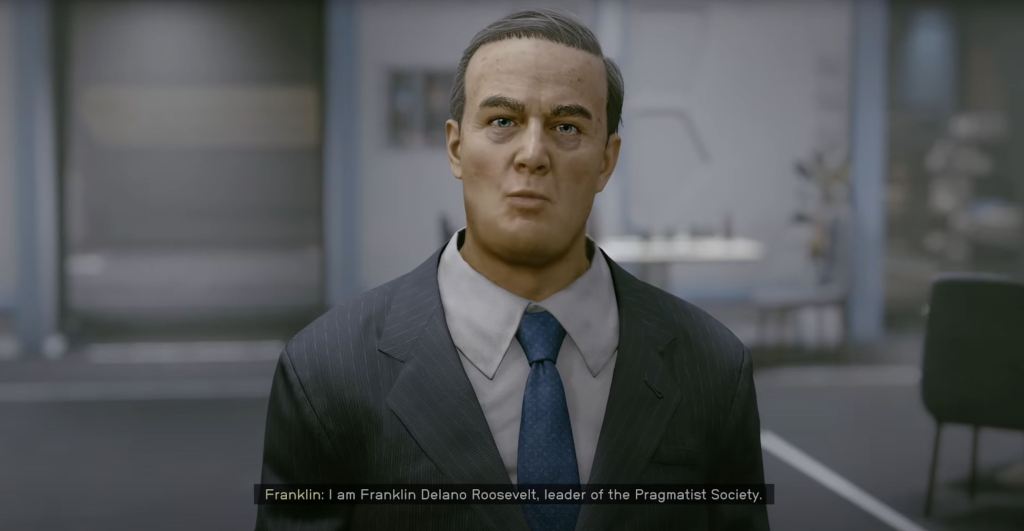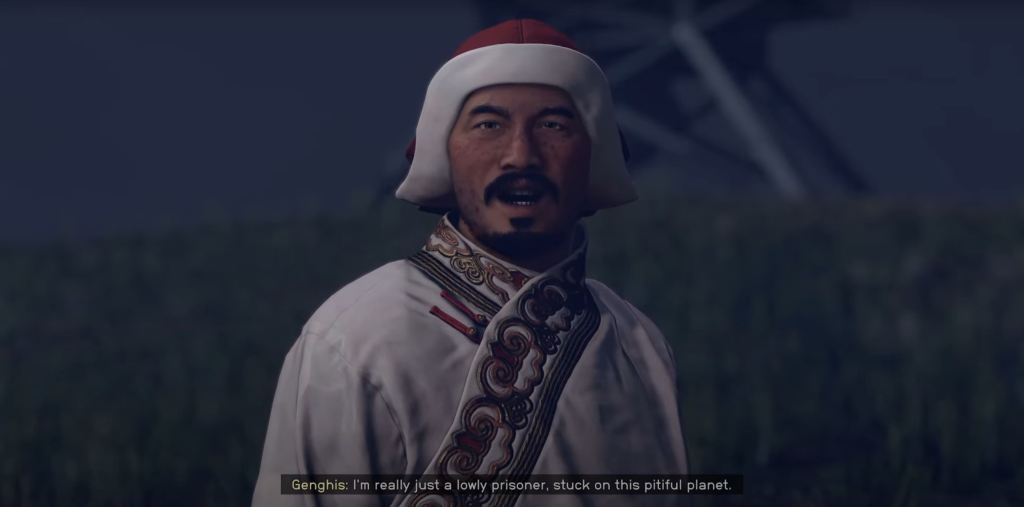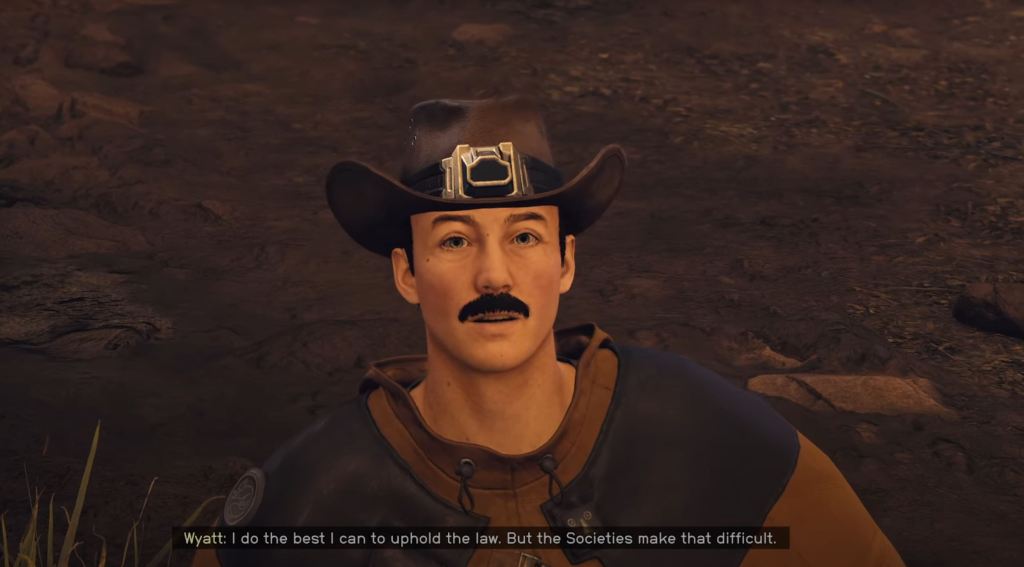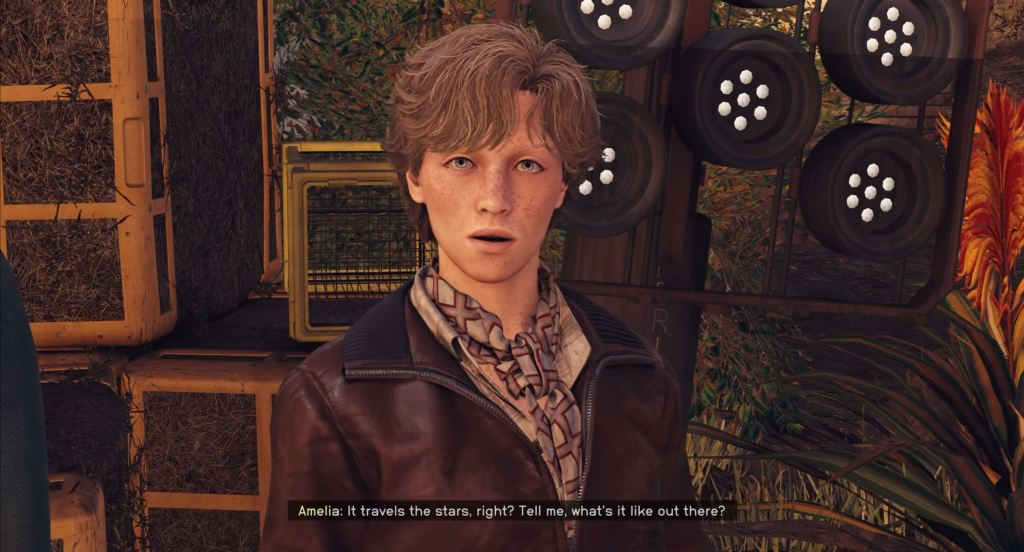This article contains spoilers for Starfield.
Though I have some complaints about Starfield‘s RPG and exploration mechanics, I have to say that the game’s side missions are some of the best I’ve seen in a Bethesda game since Oblivion. Granted, Starfield‘s massive galaxy is filled with slightly less inspiring “kill and fetch” assignments, but I was stunned by both the quality of the majority of Starfield‘s sidequests and how many of those quests exist far enough away from the game’s vaguely beaten path to ensure you may never experience them.
While you may want to blaze through Starfield’s… serviceable campaign in order to unlock its various New Game+ benefits, I can assure you that you will not see the best that this game has to offer until you take the time to discover and complete some of the more obscure quests that often showcase the game at its very best.
While I hope to talk about more of those quests in greater detail one of these days, I couldn’t wait to discuss one particular Starfield quest: “Operation Starseed.” It’s not just the best quest that I’ve found in the game so far, but it’s a quest that shows just how much some of the greatest elements of the Fallout franchise clearly influenced the style and substance of Starfield.
Located in the Charybdis System on Charybdis III, you won’t even be able to start Operation Starseed until you have a ship that is capable of traveling roughly 25-30 light years. That means you’ll need a better ship, the Piloting Skill upgrades needed to command that ship, and all the character levels and resources needed to acquire all of those things. Of course, that’s part of the reason why this mission is so special. Even after you’ve seen so many things that the game has to offer by the time you reach it, “Operation Starseed” shows that just about every corner of Starfield has a story that is just waiting to be discovered.
“Discovered” is certainly the keyword to use when talking about Operation Starseed. Even if you manage to reach Charybdis III, it may never occur to you to explore this seemingly irrelevant corner of the galaxy. Take a closer look at the planet, though, and you’ll notice that Charybdis III sports a unique landmark destination called “Crucible.” Land at Crucible, and you’ll be greeted by a surprisingly curt robot named Tobias who informs you that you have just stumbled upon a kind of secret sanctuary.
Though he’ll try to shake you down for Copper, Tobias is soon overridden by a young woman named Ada who is significantly more excited to see you. She soon informs you that the leaders of Crucible are stuck in a debate over what the residents of their secret society should do next. She advises you to speak to the oldest leader of Crucible, Franklin, for more information.
Go speak to Franklin, and you’ll soon discover that Ada has buried the lede. It turns out that “Franklin” is actually Franklin Delano Roosevelt: the 32nd president of the United States.

Interestingly, Franklin is not Crucible’s only famous resident. There are several of them, actually, and each has assumed a leadership role. For instance, there is Amanirenas: the former Queen of the Kingdom of Kush (great title, if you can get it)…

…Genghis Khan, who many of you may know from his previous attempts to conquer the entirety of the known world…

…Wyatt Earp, who actually seems to be something of an outsider around these parts…

…and, of course, the famous pilot Amelia Earhart, who may have disappeared during her flight around our world but has somehow made it to the furthest reaches of space.

At this point, you’re probably asking some very reasonable questions such as “What in the actual fuck is all this?” Well, as it turns out, all of these people are actually clones of those famous historical figures. They were sent to Crucible years ago by some unknown entity and have been living there ever since.
Why? Well, the clones don’t have an answer for that either. What they do know is that even when they die (which Franklin says happens “often”), they are simply reborn as refreshed versions of themselves with all their previous experiences and memories. This seemingly endless cycle of death and rebirth is actually the source of the debate that Ada referred to. It seems that Crucible’s leaders can’t quite agree on whether to stay at the secret “sanctuary” or find and destroy the source of their resurrections and find a way to leave the planet. For that matter, they can’t really agree on who should be the settlement’s true leader. They’re hoping that you may be able to help them with all of those issues.
There is not enough praise in this world or on all the planets in Starfield‘s galaxy for whoever decided to design a quest that not only allows you to meet versions of some of Earth’s most notable historical figures but such an odd collection of historical figures. It’s like someone fumbled their History 101 flashcards and decided to create a new mythology based on the first ones they picked up.
However, it turns out that this collection of characters isn’t quite as random as it initially seems. In fact, each has a perspective that may have been born from some of the characteristics associated with those historical figures but has been shaped by their clones’ unique experiences over their long, repeated existences.
Roosevelt’s insistence that they reconsider crumbling constructs is a very “New Deal” way to look at the society’s situation. Amanirenas still believes herself to be a leader of destiny, Amelia Earhart still wants to explore, and Genghis Khan believes that all of these debates have obfuscated the fact that the residents of Crucible are prisoners. As for Earp…well, it turns out that he’s actually the famous serial killer H.H. Holmes who has been hiding his identity from the others by posing as Wyatt Earp. Hey, we’ve all got a past we’d like to forget.
There is certainly something very Fallout-like about the broad strokes of that premise. It’s easy to imagine some vault tucked away in the Capital Wastelands that contains clones of famous historical figures who are all unwillingly participating in some bizarre experiment that only ever made sense to the kind of people with the power and resources needed to make such things happen. Fallout doesn’t hold the patent on sci-fi stories that are equally absurd, horrifying, and hilarious, but Operation Starseed really lives at the intersection of those concepts where the Fallout franchise laid its roots long ago.
However, Operation Starseed’s most Fallout-like quality is, appropriately enough, the fallout of the mission itself. After defeating some horrifying (and incredibly tough) alien enemies and learning the truth behind Crucible’s origins, you’re suddenly faced with a series of choices. You’re not only responsible for deciding whether the clones are trapped, freed, or killed, but you may have to decide which of the major historical figures will lead the clones into the new world you lay out before them.
It’s one of the rare choices in Starfield that is not only morally ambiguous but comes with consequences and opportunities that are not necessarily obvious from the outset. Most notably, making the “right” choices in this scenario will allow you to recruit the most unlikely and most wonderful companion in the game: Amelia Earhart herself. I think Starfield would benefit from putting you in more positions where you need to live with the rewards and costs of the decisions you make, and Operation Starseed’s ending shows why that is often a crucial part of the best role-playing experiences.
Operation Starseed’s rewards are secondary to the experience of the mission itself, though. It comes at a time when you probably think you’ve seen most of the things the game has to offer (if you find it at all), and each of its revelations hit like a hammer without ever losing that sense of humor and fun that the very best RPG quests should ultimately strive to provide. Locating the mission is a journey unto itself, and navigating the thorny ambiguities that emerge once you accept its wild (and incredibly clever) premise soon proves to be even more challenging and rewarding than navigating the star systems required to reach Charybdis III.
In a game that sometimes overvalues the sheer size of its experience, Operation Starseed serves as a reminder that the most epic adventures in role-playing games strive to offer something much more intimate than the infinite.
